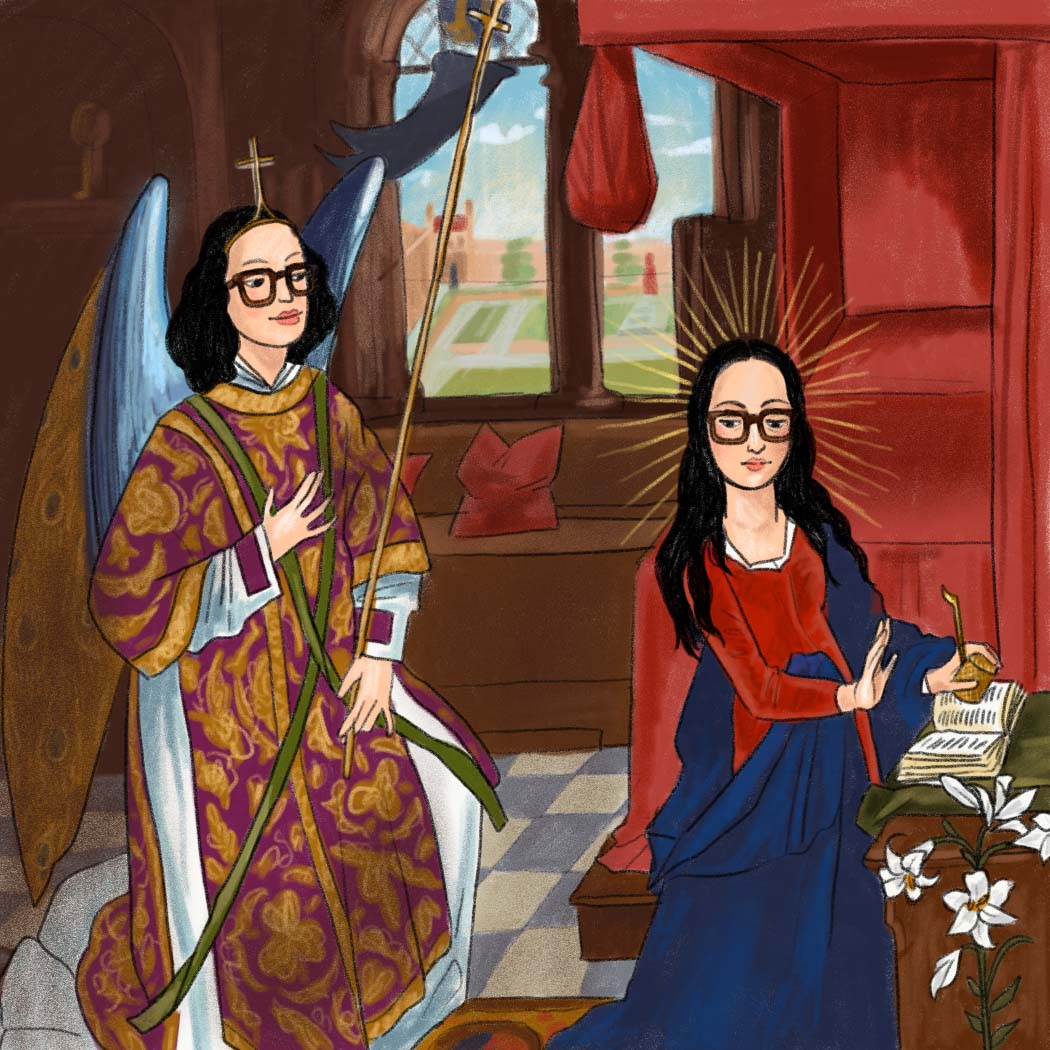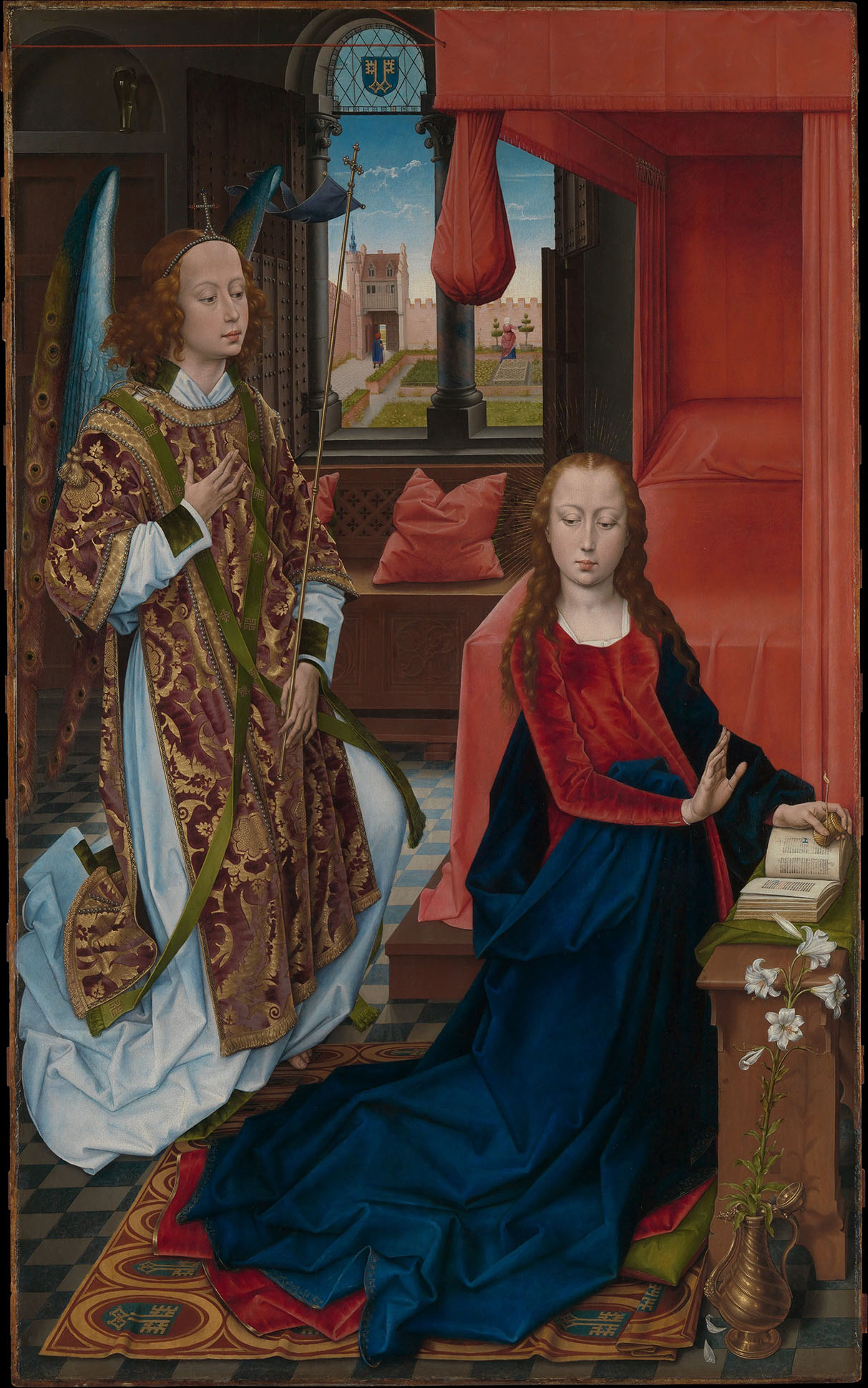43/100
The Annunciation
-
Artist
Hans Memling
-
Year
1465-70
-
Culture
Netherlandish
-
Date of Copy
As I was looking for women to depict from art history to depict for this project, one figure came up again and again agnd again: The Virgin Mary. I learned about so many of the episodes she's often depicted in--holding baby Jesus, mourning adult Jesus's death, greeting the three kings in the manger, ascending to heaven, et cetera. What was meant to be mostly an art history self-education ended up also being a religious self-education. Anyway, my point is, one of those Virgin Mary images that kept coming up again and again was the Annunciation, and the Annunciation became one of my favorite micro-genres of painting.
In Annunciation pictures, Mary is usually minding her own business, reading a book, when she's interrupted by the angel Gabriel and told that she will get pregnant by immaculate conception and give birth to everyone's Lord and savior Jesus Christ. There's also usually a lily somewhere. I think what I like about them is Mary's usually stiff, stylized, and ultimately unconvincing pose of surprise, combined with the improbable sight of an angel who's usually acting like it's totally normal for him to be there. A lot of artists, especially in the Renaissance era, appear to also use this incident to showcase their mastery of architectural perspective, which is not strictly necessary to get across the point of the scene.
This particular example hits most of those highlights. I also liked the peacock-like detail to Gabriel's wings, and the gratuitous little outdoor yard scene that can be seen outside the window. It looks like this painting was commissioned by a rich man who wanted it to reflect some personal details, hence his coat of arms in stained glass in the window.
This has that Northern Renaissance attention to surface detail and lack of accuracy in actual human proportion that I find so fun and charming. It's a textbook example of the style. Hans Memling, who painted this, was one of its main practitioners. He passed through the workshop of of Rogier van der Weyden, who has the same kind of style going on and shows up a lot in museums as well.
Reference image is from The Met, where this picture is today.

